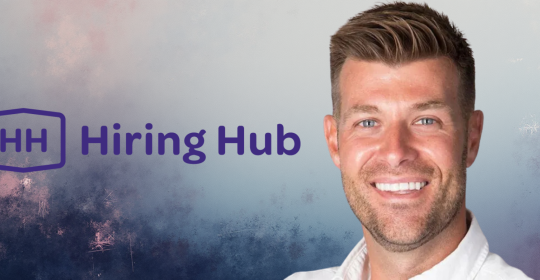The Engagement Paradox: Today’s workplace is being reshaped by a powerful contradiction.
Technology was supposed to make work easier—automating repetitive tasks and freeing up time for creativity, strategy, and problem-solving. Yet paradoxically despite this promise, only 10% of UK employees say they’re actively engaged at work.
Why the disconnect?
One answer may lie in the readiness gap: the growing divide between the skills employees have and the ones they now need. As new tools flood the workplace—especially AI-driven ones—many employees feel overwhelmed, underprepared, or left behind.
Ironically, AI could be the very thing that helps close this gap. When used to personalise development, surface skills insights, and empower continuous learning, AI becomes a force multiplier for employee engagement—not a threat to it. It also builds business resilience by giving leaders the insights they need to respond to disruption with confidence, accelerates innovation by unlocking hidden workforce potential, and strengthens customer satisfaction by ensuring employees are better equipped to deliver high-quality service and solutions.
The Workforce Readiness Gap and a Future-Ready Workforce
The workforce readiness gap is the misalignment between the skills employees possess and those required to keep pace with business and technological change.
While skills gaps have always existed, today’s challenges are unique in their speed, complexity, and scale.
To maintain a future-ready workforce, organisations must rethink how development happens. The solution lies in blending the best of both worlds—human development and AI insight. Pair hands-on learning, mentorship, feedback, and real-world assignments with AI-powered personalisation to create development pathways that scale and stick.
Using AI to Personalise Employee Development and Boost Engagement
AI doesn’t just accelerate change—it can help employees keep pace with it. By analysing workforce data at scale, AI identifies skills gaps, recommends targeted training, and matches people to growth opportunities aligned with both their ambitions and business needs.
Understanding your workforce's potential is critical to building a culture where employees feel empowered to grow. High-performing organisations lead by adapting to modern learning habits and investing in targeted development. Moving beyond a one-size-fits-all model is hard—but essential. Without personalisation, L&D often misses the mark and fails to deliver strategic insights.
With AI-driven personalisation, employees are more likely to feel valued, stay longer, and perform better. That, in turn, drives both productivity and retention.
Creating Agile and Bespoke Training Journeys
AI provides a real-time view of workforce capability—what skills exist, what’s missing, and where to invest. This visibility enables companies to shift from reactive training to proactive development.
As skills requirements shift and uncertainty rises, workforce agility becomes a core capability. AI-enabled training helps organisations build agility by offering adaptive, bespoke learning experiences while also giving leaders a clearer picture of workforce strengths and gaps.
Combining AI with traditional methods—such as feedback, mentoring, and stretch assignments—creates a well-rounded, responsive learning model that supports both individual growth and business readiness.
Tailoring Development to Boost Engagement and Performance
Many companies invest heavily in learning and development. But too often, those efforts are generic. People learn in different ways. Roles and departments require different capabilities.
That’s why personalised L&D is essential, especially for large or complex organisations. With AI, businesses can finally move past one-size-fits-all models. AI-powered development programs recommend relevant content, track progress, and adapt over time.
This makes learning more meaningful for employees and more effective for employers—helping to close the workforce readiness gap from both directions. The result isn't just higher engagement, but improved operational performance, faster innovation cycles, and better customer outcomes as employees confidently apply new capabilities directly to their roles
Turning AI into an Ally for Workforce Readiness
As the nature of work continues to evolve, so must the strategies used to prepare and empower employees. If organisations want to remain competitive, innovative, and agile, they need to ensure their people are equipped to adapt and thrive.
AI presents a powerful opportunity to make this happen. From pinpointing skills gaps to delivering personalised learning journeys, AI can help build a more capable, engaged, and future-ready workforce. But this requires intention. Companies must move beyond generic training schemes and take a more tailored, data-driven approach that respects the diversity of employee needs, learning styles, and aspirations.
With the right strategy, AI becomes more than a tool—it becomes an ally in building the workforce of the future. Organisations that embrace this approach now will gain a significant competitive advantage in attracting, developing, and retaining the talent needed to navigate in an increasingly uncertain business landscape.






